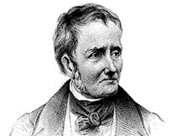Thomas De Quincey
1785-1859
As a child he was alienated from his prosperous mercantile family by his sensitivity and precocity. At 17 he ran away to Wales and then lived incognito in London (1802–03), where he formed a friendship with a young prostitute named Ann, who made a lasting impression on him. Reconciled to his family in 1803, he entered Worcester College, Oxford, where he conceived the ambition of becoming “the intellectual benefactor of mankind.” He became widely read in many subjects and eventually would write essays on history, biography, economics, psychology, and German metaphysics. While still at college in 1804, he took his first opium to relieve the pain of facial neuralgia. By 1813 he had become “a regular and confirmed opium-eater”, keeping a decanter of laudanum by his elbow and steadily increasing the dose; he remained an addict for the rest of his life. De Quincey was an early admirer of The Lyrical Ballads, and in 1807 he became a close associate of its authors, William Wordsworth and Samuel Taylor Coleridge. He rented Wordsworth’s former home, Dove Cottage at Grasmere, on and off from 1809 to 1833. In 1817 De Quincey married Margaret Simpson, who had already borne him a son. Margaret bore him eight children before her death in 1837. Three of De Quincey's daughters survived him. Though he wrote voluminously, he published almost nothing. His financial position as head of a large family went from bad to worse until the appearance of Confessions (1821) in London Magazine made him famous. It was reprinted as a book in 1822. In July 1818 De Quincey became editor of The Westmorland Gazette, a Tory newspaper published in Kendal. He was unreliable at meeting deadlines, and in June 1819 the proprietors complained about "their dissatisfaction with the lack of 'regular communication between the Editor and the Printer', and he resigned in November 1819. De Quincey was "a champion of aristocratic privilege," reserved "Jacobin" as his highest term of opprobrium, held reactionary views on the Peterloo Massacre and the Sepoy rebellion, on Catholic Emancipation and the enfranchisement of the common people, and yet was also a staunch abolitionist on the issue of slavery. By the 1820s he was constantly in financial difficulties. Often he was forced to seek protection from arrest in the debtors' sanctuary of Holyrood in Edinburgh. Even there, his problems persisted; he got into further difficulties for debts he incurred within the sanctuary. His financial situation improved only later in his life when his mother's death in 1846 brought him an income of £200 per year. When his daughters matured, they managed his budget more responsibly than he ever had himself. He died and was buried in Edinburgh.
